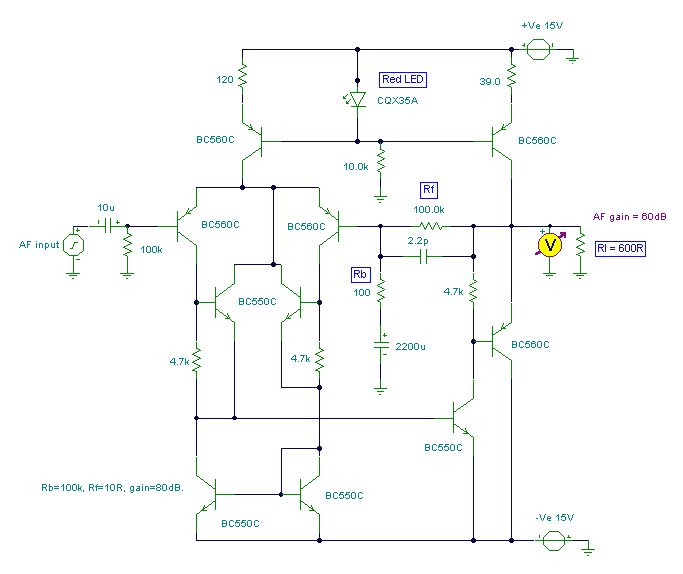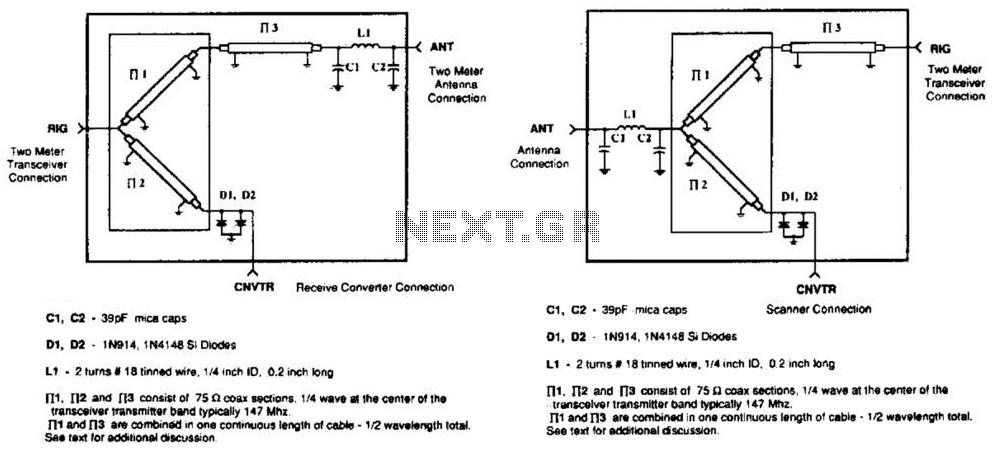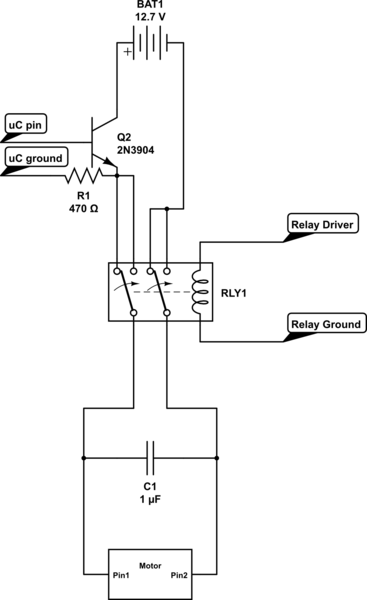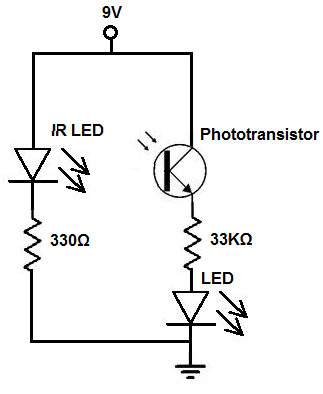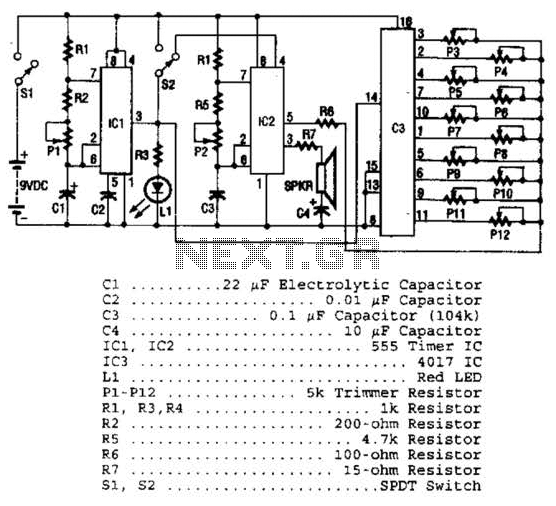
1.5V-powered microphone signal amplifying circuit

A 1.5V-powered microphone signal amplifying circuit is designed with a power supply for the microphone signal amplification. The circuit primarily consists of a differential amplifier formed by transistors VT2 and VT3. Additionally, VT6 functions as a common emitter voltage amplifier, where the output signal is amplified at the collector. The input signal is applied to the base electrode of VT2, while the collector and base of transistors VT1 and VT2 are connected to provide a DC bias. The emitter resistor circuit is composed of VT4 and VT5, which are used to bias the collectors of VT2 and VT3. The use of transistors in this configuration minimizes resistance power loss, achieving the desired amplification effect.
This 1.5V-powered microphone signal amplifying circuit operates by utilizing a series of transistors to amplify audio signals captured by a microphone. The circuit begins with the microphone, which converts sound waves into a small electrical signal. This signal is then fed into the base of the differential amplifier formed by VT2 and VT3. The differential amplifier is crucial for enhancing the signal-to-noise ratio by amplifying the desired audio signal while rejecting common-mode noise.
Transistor VT6 acts as a common emitter amplifier, further increasing the signal strength. The output from VT6 is connected to the collector, which provides a higher voltage swing, resulting in a more robust output signal that can drive subsequent audio processing stages or output devices.
The configuration of VT1 and VT2, where their collector and base are short-circuited, allows for a stable DC biasing condition necessary for proper transistor operation. This setup ensures that the transistors operate within their active region, providing linear amplification of the input signal.
The emitter resistors, formed by VT4 and VT5, play a significant role in stabilizing the bias point of the circuit. They help to set the operating point of VT2 and VT3, ensuring consistent performance despite variations in temperature or supply voltage.
Overall, this circuit exemplifies an efficient design for low-voltage microphone signal amplification, leveraging the properties of transistors to achieve significant amplification while maintaining low power consumption. The careful selection of components and their configuration is vital for achieving the desired audio fidelity and performance.1.5V-powered microphone signal amplifying circuit 1.V power supply shown for the microphone signal amplifying circuit, which by VT2, VT3 differential amplifier is constituted o f the main group into a part, VT6 a common emitter voltage of the amplifier, the output signal is amplified by the collector. Input by the input signal VI2 base electrode, the collector and base of VT1 VT2 short-circuits to the base of a DC bias, VT4, VT5 the emitter resistor circuit composed of VT2, VT3 collector-bias.
Use transistor may reduce the resistance power loss can be obtained the desired amplification effect.
This 1.5V-powered microphone signal amplifying circuit operates by utilizing a series of transistors to amplify audio signals captured by a microphone. The circuit begins with the microphone, which converts sound waves into a small electrical signal. This signal is then fed into the base of the differential amplifier formed by VT2 and VT3. The differential amplifier is crucial for enhancing the signal-to-noise ratio by amplifying the desired audio signal while rejecting common-mode noise.
Transistor VT6 acts as a common emitter amplifier, further increasing the signal strength. The output from VT6 is connected to the collector, which provides a higher voltage swing, resulting in a more robust output signal that can drive subsequent audio processing stages or output devices.
The configuration of VT1 and VT2, where their collector and base are short-circuited, allows for a stable DC biasing condition necessary for proper transistor operation. This setup ensures that the transistors operate within their active region, providing linear amplification of the input signal.
The emitter resistors, formed by VT4 and VT5, play a significant role in stabilizing the bias point of the circuit. They help to set the operating point of VT2 and VT3, ensuring consistent performance despite variations in temperature or supply voltage.
Overall, this circuit exemplifies an efficient design for low-voltage microphone signal amplification, leveraging the properties of transistors to achieve significant amplification while maintaining low power consumption. The careful selection of components and their configuration is vital for achieving the desired audio fidelity and performance.1.5V-powered microphone signal amplifying circuit 1.V power supply shown for the microphone signal amplifying circuit, which by VT2, VT3 differential amplifier is constituted o f the main group into a part, VT6 a common emitter voltage of the amplifier, the output signal is amplified by the collector. Input by the input signal VI2 base electrode, the collector and base of VT1 VT2 short-circuits to the base of a DC bias, VT4, VT5 the emitter resistor circuit composed of VT2, VT3 collector-bias.
Use transistor may reduce the resistance power loss can be obtained the desired amplification effect.
